博文
路过Benjamin Kipp在Chappaqua的故居
|||
路过Benjamin Kipp在Chappaqua的故居
黄安年文 黄安年的博客/2015年5月30日美东时间上午,北京时间晚上发布
我们的住地距离Jesse Kipp的故居(1763)年步行只有10分钟左右的路程(1040 Hardscrabble Road), Kipp家族的故居在附近还有几家,我们汽车路过时并未引起注意。今天(星期六)一早我们走在几乎空无一人(往返70分钟只见三人)和极少车辆通行(只见7辆车)的路上,发现有座建筑物门前挂着美国国旗,走近一看建筑物上有名人建筑物的标致。于是上前仔细观看发现这座美国革命时期的建筑物保存完好,令人鼓舞。回家后从GOOGLE网上查询对于Benjamin Kipp家族有所了解,也增加对于我们所住地区的历史文化感到兴趣。
照片9张拍摄自今天早上。另外2张下载自GOOGLE
1,
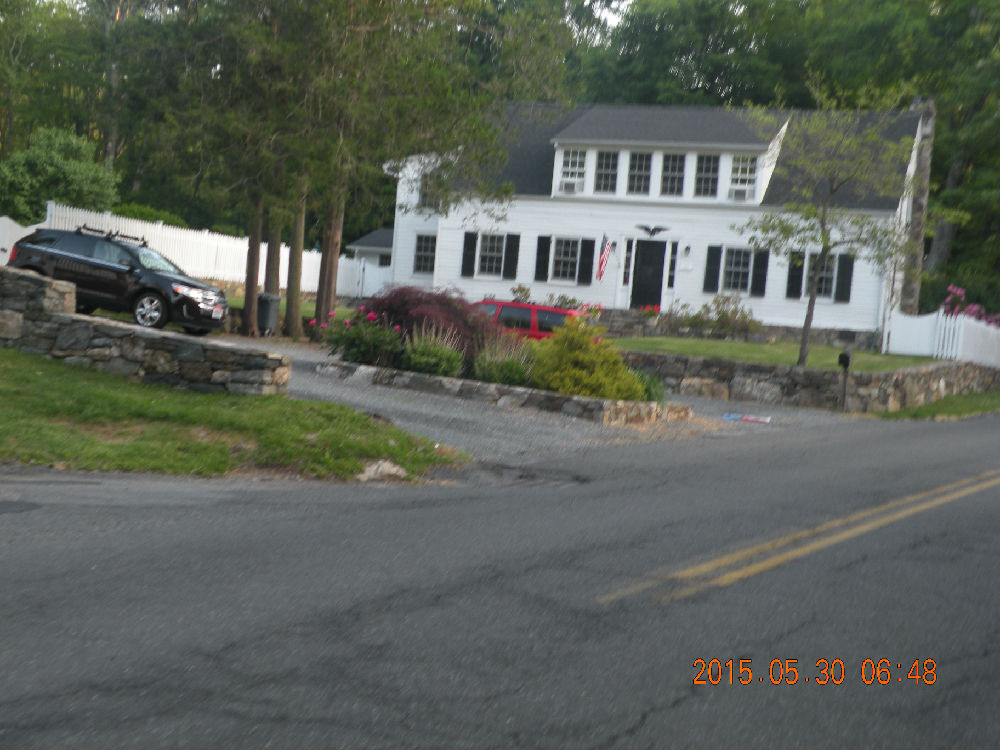
2,

3,
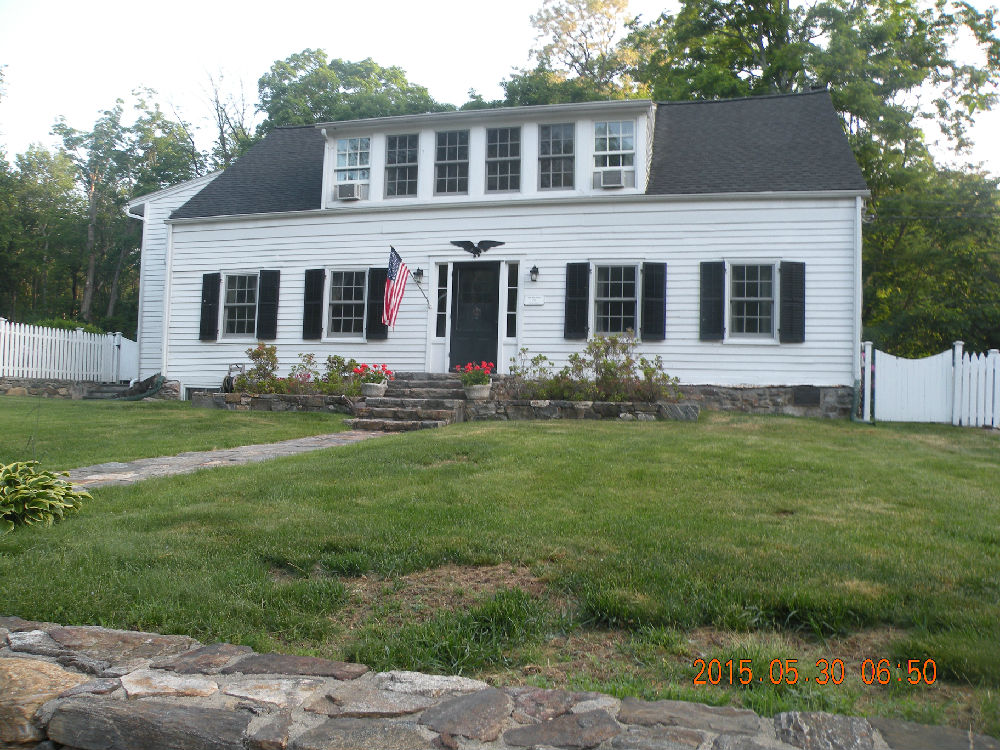
4,

5,
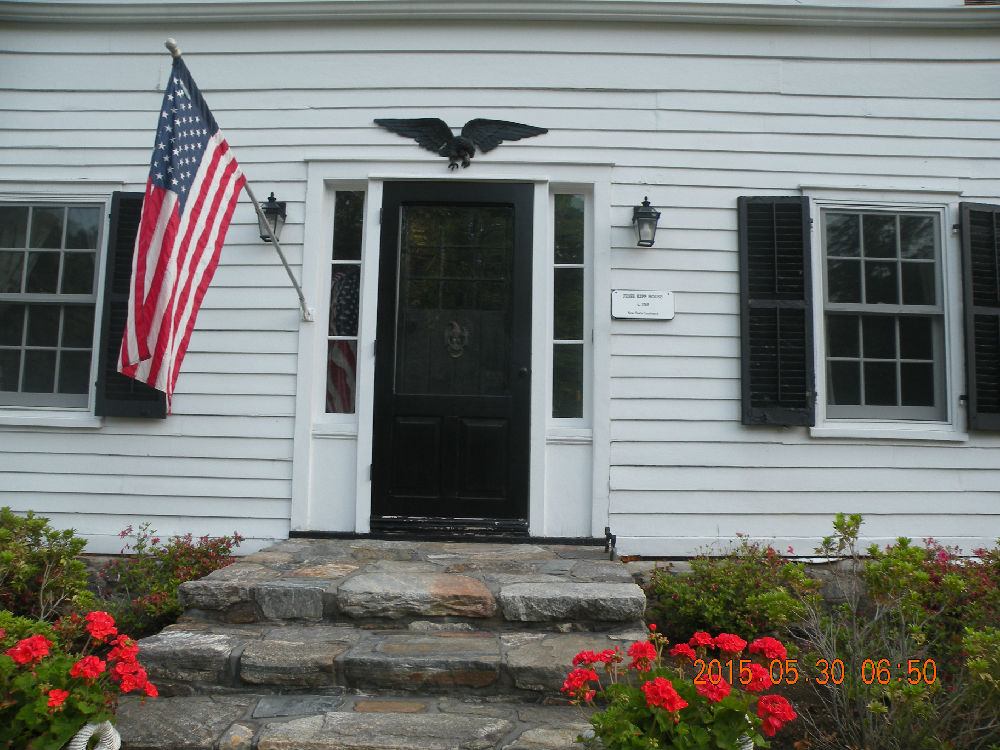
6,

7,
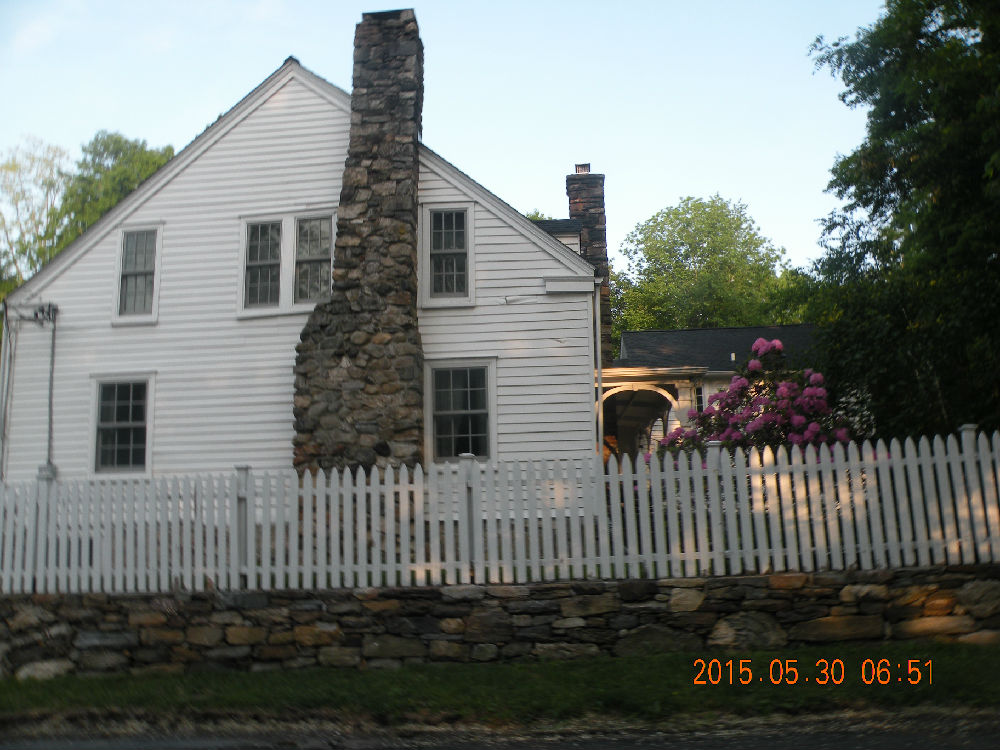
8,

9,

10,

11,
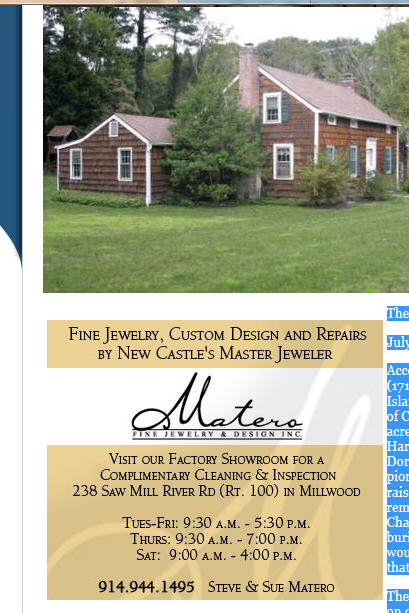
*****************88888
The Kipp Heritage in New Castle
July 5, 2009
According to familyrecords, Benjamin Kipp (1714-1782) moved in 1732 from Newtown,Long Island, to the newly settled Quakercommunity of Chappaqua. There he acquired a farm of 400 acres, located along whatare now Douglas and Hardscrabble Roads. About 1735 he married DorothyDavenport, a member of another pioneer Quaker family in Chappaqua, and theyraised a large family. Many of their descendants remained in the community andbelonged to the Chappaqua meeting. More than 50 Kipps are buried at the Quakergraveyard, and the list would be much larger if it included the families thatKipp daughters married into.
There are at leastsix former Kipp houses located on or near the old family farm. Each is worth designationas a New Castlelandmark. In the descriptions that follow, you will notice that the Kipps (likemany families) tended to re-use favored first names (such as Benjamin) over andover again, which tends to cause confusion among them. We will try to identifyand distinguish individual family members as clearly as possible.
Benjamin Kipphouse, ca. 1735. 335 Douglas Road.
About 1778, GeorgeWashington commissioned surveys and a set of maps of roads used by his troopsin Westchester. One of the maps includes partsof what are now King Street,Quaker Road,Kipp Street,Douglas Road,Hardscrabble Road,and Briarcliff Road.At the corner of Douglas and Hardscrabbleroads is a house labeled Benj. Kipp. This was the original Kipp farmhouse, avery small one-and-a-half-story shingled house, with just a door and a singlefront window on the first floor, and small eyebrow windows on the second. Itwas substantially enlarged in 1957, but photographs taken before and during thealteration, together with the architect’s plans, make it relatively easy totrack the history of the building from its original form. It was probablytypical of the modest homes built by the Chappaqua pioneers, who had littletime or inclination to build more than basic shelters for their families asthey transformed wilderness into farmland.
The house remainedin the Kipp family until the early 20th century. In the early 1800s century itwas the home of an unmarried grandson of Benjamin’s, also named Benjamin(1764-1849). It then belonged to Charles C. Kipp (1812-1867), and his wifeAntoynette Washburn Kipp (1818-1870). The last family member to own and occupythe house was Charles and Antoynette’s daughter Wilhelmina Kipp Sarles(1844-1913), the widow of Samuel Sarles (1833-1908). All these descendants, andprobably Benjamin himself, are buried in the Quaker graveyard in Chappaqua.
Jesse Kipp house,before 1771. 1040 Hardscrabble Road.
Jesse Kipp(1740-1780), named after his Long Islandgrandfather, was the oldest of Benjamin Kipp’s five surviving sons. He marriedAnn Haight about 1763, and he may have built his home about this time. It wascertainly in existence by 1771, when it is first mentioned in North Castletown records.
Jesse and Ann Kipphad seven children before his early death at age forty. Two years later, hiswidow remarried. Her second husband was Robert Reynolds, the 52-year-oldbachelor son of John Reynolds, who owned a large farm on Quaker Road. Robert and Ann Reynoldsremained in her house and had four children of their own.
The house doesn’tappear on our earliest maps, but town records reveal where it was located. In1789, Campfire Roadwas first formally laid out, and one end of it is identified as the residenceof Robert Reynolds. 1040 Hardscrabble Road is just south of theintersection with Campfire Road,and there is little doubt that this is the house referred to.
Ann Kipp Reynoldswas widowed for the second time in 1809, and she herself died in 1811. Thehouse remained in the Kipp family until the death of Jesse’s son Gilbert Kippin 1857, It was then sold to another Quaker, Silas Tompkins, who owned it untilhis own death in 1889.
In 1867, the New Castle map in Beers’ atlas of Westchester identifiesthe S. Tompkins Residence as “Washington’sHeadquarters,” and Scharf’s history of WestchesterCounty, published in 1886, states that“The residence of Mr. Silas Tompkins…is said to have been for a short time Washington’sheadquarters.” On the basis of these assertions, the Daughters of the AmericanRevolution named the house Washington’sHeadquarters, and mounted a commemorative plaque there in 1966.
Unfortunately,there is no 18th-century evidence to support this attribution. Washington and his troops did indeed pass though New Castle—on Millwood Road, Quaker Road, and Armonk Road. Butthere is no evidence that they ever set foot on Hardscrabble Road. Furthermore, it seemsvery dubious that a family of devout Quakers, whose Peace Testimony forbadetheir support for either side in the Revolutionary War, would have offeredhospitality to General Washington or allowed their home to be used as amilitary headquarters. (The Quakers did allow their meetinghouse to be used asa military hospital following the Battle of White Plains in 1776, but that wasan act of charity to wounded men, some of whom died and were buried there.)
The house isnonetheless one of the earliest in New Castle – one of the few that can be said to have beenbuilt in colonial times. It has been enlarged and altered over the centuries,but the earliest parts retain much of the original hand-hewn post-and-beamframing of Jesse Kipp’s homestead.
William Kipp house,before 1778. 325 Douglas Road.
The sameRevolutionary map that shows Benjamin Kipp’s home identifies a second one justsouth of his, labeled “Wm Kipp.” William Kipp (1749-1800) was another ofBenjamin’s five sons, a younger brother of Jesse Kipp. The map provides areliable date for his house, but he was married to Mary Merritt in 1770, andfour of their ten children were born by 1776, so the house may have been builtin the early 1770s.
A drawing of 1873indicates that it was originally a saltbox cottage, only a little larger thanhis father’s. By the 1870s, it was attached to a much larger addition. It hassince become part of a substantial and very handsome Colonial Revival house.Only a part of the saltbox cottage remains visible, at the northwest corner,but traces of the old post-and-beam framing, and the foundation of the originalstone chimney, can still be found within the structure.
The house remainedin the Kipp family through most of the 1800s. In the latter part of the centuryit was the home of William Kipp’s grandson Conklin Kipp (1810-1890).
Kipp-Gill house,ca. 1810. 292 Douglas Road.
This is called theKipp-Gill house because it was originally built by the Kipps and in the late1800s became the home of Joseph Gill (ca. 1836-1909), who married into the Kippfamily. The original owner may have been Benjamin Kipp (1787-1851), who was theson of William Kipp and was a cousin of the Benjamin Kipp who lived in the oldhomestead (above). He married Phebe Conklin in January, 1810, and their firstchild, Conklin Kipp (above), was born the following December. The originalFederal-style, center-hall house may have been built about that time.
At some pointbefore the Civil War, the house was substantially enlarged with a pillared wingin the Greek Revival style. The resulting ensemble is one of the mostarchitecturally distinctive dwellings in New Castle.
Kipp-Lambert house,ca. 1816 and 1860. 1130 Hardscrabble Road.
Willet Kipp(1797-1853) was the son of Gilbert and Hannah Sarles Kipp, the grandson ofJesse and Ann Haight Kipp, and the great-grandson of Benjamin and MaryDavenportKipp. He married Mary Carpenter in 1816, and may have built their small cottageon Hardscrabble Roadabout that time, half a mile or so north of his grandfather’s house at 1040Hardscrabble.
Willet Kipp’s homewas a simple story-and-a-half cottage typical of the early Quaker farmhouses inNew Castle.There he and Mary raised seven children. She died in 1849, he in 1853. In 1860,the property was required by New Yorkbanker Edward W. Lambert, who built a much larger Greek Revival house as hisretirement home, but connected the original cottage to the house for use as akitchen. Lambert called his estate Hemlock Grove, for the large stand ofhemlocks on the rocky knoll behind the house.
At the end of the1800s, the estate was acquired by an architect, Charles Valentine. He erectedthe curved neoclassical arbor that extends to the west of the house, and heprobably rebuilt the two-story front verandah with more substantial pillarsthan it originally had.
In the middle ofthe 20th century, the house belonged to Donald Macaulay, who renamed itBoxwood, after the large English box bushes near Hardscrabble Road.
Charles C. Kipphouse, ca. 1905. 300 Douglas Road.
Charles C. Kipp(born 1851) was a son of Conklin Kipp, and was named after his uncle (above).He married Dolly Howe in 1882. Their house was built across the street from hisfather’s and next door to his grandfather’s in the first decade of the 1900s.With its generous wraparound porch, double front door, and bow windows, it istransitional in style, combining Victorian and Colonial Revival elements, andis typical of the comfortable family homes of the turn of the 20th century. Ithas changed very little over the century since it was constructed.
Inside the carriagehouse at their grandfather Conklin’s farm are preserved the signatures of twoof Charles and Dolly Kipp’s daughters, Kittie and Edna, who played there aschildren. When Edna grew up, she wanted to marry Herbert Johnson, but herparents disapproved of the match, possibly because Herb Johnson wasn’t aQuaker. The young couple decided to elope. According to family tradition,before Edna climbed out of the window from her bedroom, she threw down hersuitcase, which struck Herb on the head. Later, Herb is said to have commentedfacetiously that he should have known what was coming when she hit him with thesuitcase. The Johnsons lived on a farm on South Hardscrabble Road, near the Mount Pleasant border,and it continued to be the home of their son, Charles Herbert Johnson, wellinto the 20th century.
Kittie Kipp(1884-1905) married John Graff, who in 1890 had purchased the old Jesse Kipphouse and farm from the widow of Isaac Tompkins. The farm still contained 114acres, on both sides of Hardscrabble Road. So, for a period of her regrettably shortlife, Kittie Kipp Graff became the possessor of one of the last major remnantsof the land that her great-great-great grandfather, Benjamin Kipp, hadtransformed from wilderness more than a century and a half earlier.
http://www.newcastlenow.org/index.php/article/3601
https://blog.sciencenet.cn/blog-415-894239.html
上一篇:Chappaqua乡村景观清晨留影(二)
下一篇:清晨漫步在Chappaqua住地的自然保护区